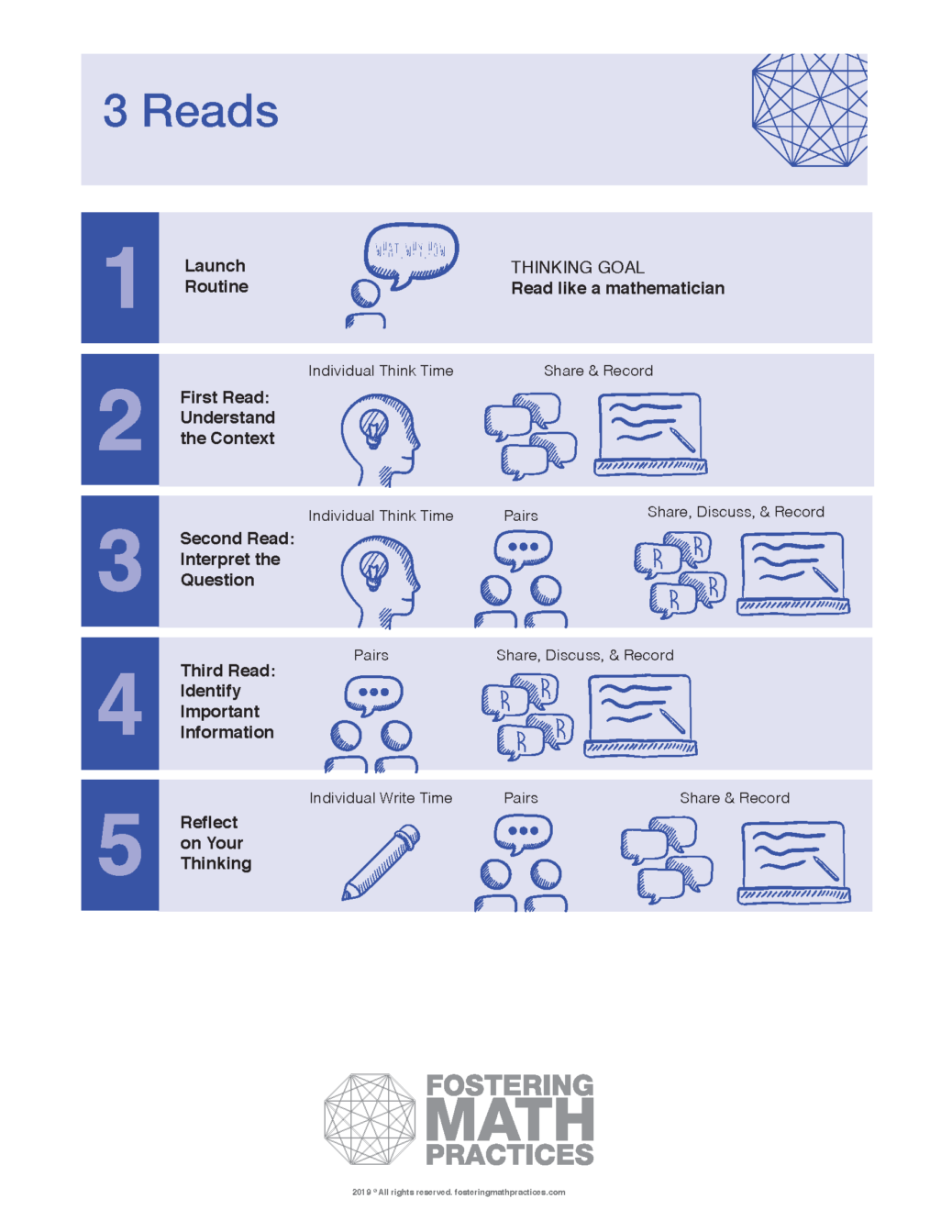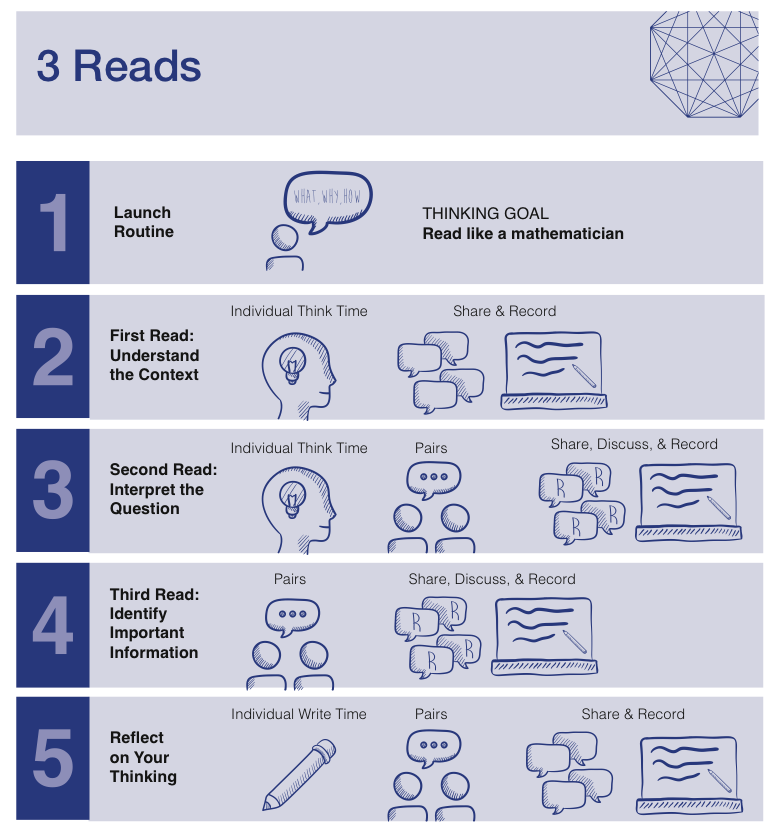Leverage Routines
As we well know, routines support classroom efficiency by providing a predictable means for students to go about regular classroom activities like organizing materials, lining up, placing lunch orders, turning in notes from home/homework, etc. Instructional routines provide the same benefits, but within the context of teaching and learning. Their predictable flow and repeated instructional designs support teachers and students alike in their shared goal to develop mathematical thinking. Engaging students in instructional routines that have essential supports built into their design allows all the available bandwidth and intellectual energy (teachers and students) to focus on and develop mathematical ideas and concepts as students develop mathematical thinking.
It is especially helpful to lean into instructional routines when teaching remotely. Whether sending materials home, creating pre-recorded lessons or facilitating synchronous learning, the predictability of the designs for interaction in a routine provide critical support. If your students are already familiar with the routines, they will provide a comfortable context for learning and students will engage easily – like connecting with an old friend. If students are not yet familiar, routines build stability during unprecedented constantly changing times.
Developing students’ independence to make sense of a problem is even more critical/urgent in a remote world, so let’s start by focusing on the 3 Reads Instructional Routine.
Articulate What Mathematicians Do to Make Sense of a Problem
They read it multiple times – 3 times is typical – with each read serving a different purpose. The first read is to get a sense of what the problem’s about. The second read is to articulate, in their own words, the question they are answering. Finally, the third read is a closer read to record important information.
Important information extends far beyond identifying numbers that are provided and key words that readers may associate with operations. In fact, mathematicians read for quantities and relationships. As you consider the task below, apply the 3-reads approach.
What is the problem about? What are you trying to find? What are the important quantities?
The students in Mr. Rivera’s art class are designing a stained-glass window to hang in the school entryway. The window will be 2 feet tall and 5 feet wide. They have drawn the design below:
They have raised $100 for the materials for the project. The colored glass costs $5 per square foot and the clear glass costs $3 per square foot. The materials they need to join the pieces of glass together costs 10 cents per foot and the frame costs $4 per foot. Do they have enough money to cover the costs of the materials they will need to make the window?
Source: Illustrative Mathematics 7.G.B. and 7.EE.B.3 Task https://tasks.illustrativemathematics.org/content-standards/7/EE/B/3/tasks/1513
You may have named some of the quantities below – some of which we know the value for, and some of which we don’t.
- The length of the window (value given, 2 feet)
- The width of the window (value given, 5 feet)
- Total area of the colored glass (value not given)
- Total area of the clear glass (value not given)
- Diameter of the half circles (value not given)
- Radius of the half circles (value not given)
- Amount of money raised (value given, $100)
- Amount of money colored glass tiles cost (value given, $5 per sq ft)
- Total cost of materials (value not given)
- …..many more
Engage Students in The 3 Reads Instructional Routine Remotely
In a remote setting, there are many ways to engage your students in the 3 Reads routine. If you are sending print materials home, you can provide a 3 Reads Template that includes directions, ask yourself questions for students to begin internalizing the process, and sentence frames/starters for students to articulate their comprehension as they go.
If you are recording lessons and students are engaging in them asynchronously, you can simulate interactions with purposeful pauses and integration of supports (ask yourself questions, and sentence frames). Students can respond in writing, work through the process with a learning partner (family member, stuffed animal, etc.) you can read the first read aloud, and pause for students to ask themselves what it’s about. Finally, you can provide a record of sample responses that you’ve anticipated along the way – orally and visually.
If you are working in a synchronous setting, you can continue to engage students with purposeful pauses and integration of supports. However, you have the added benefit of real-time interactions. That is, students can respond in a chat window, break out to work with a partner to identify important information. Students can hold responses up to a camera, take photos and insert into a shared google slide deck, and/or teachers can type into a shared screen.
Although these times are particularly challenging, and no system is perfect, finding ways to engage students in the sense-making process while providing critical supports is still possible. Of course, we’d rather be in person, but let’s continue to be creative in our remote settings! Please share your ideas to engage students in the 3 Reads Instructional Routine as well. #3Reads #FosteringMPs
Would you like to learn more?
Read more about the 3 Reads in Chapter 6 of Routines for Reasoning


